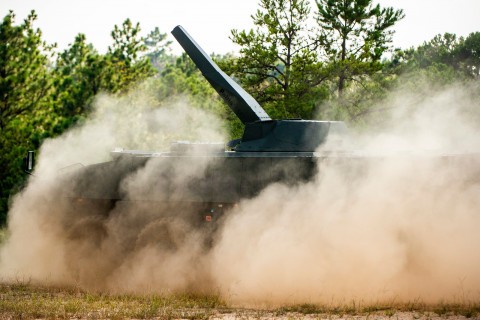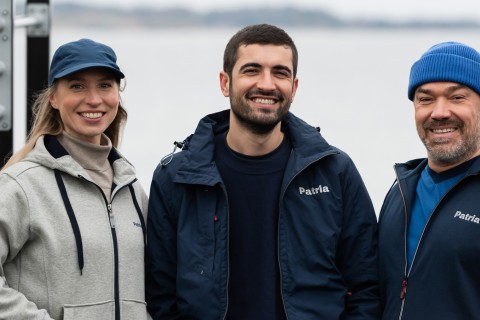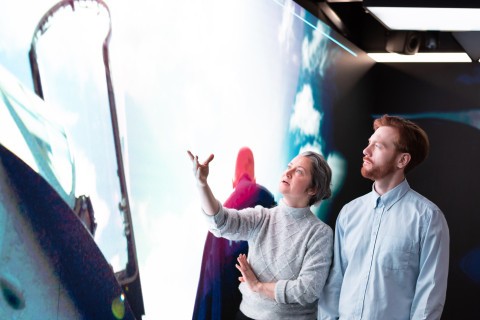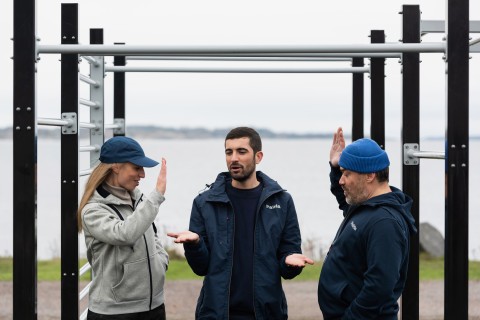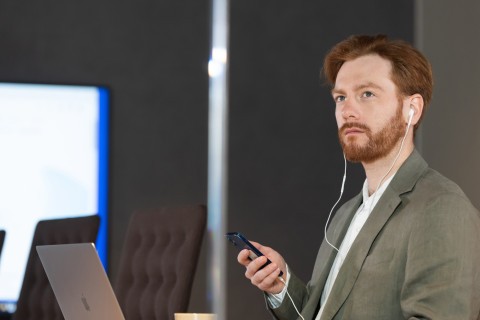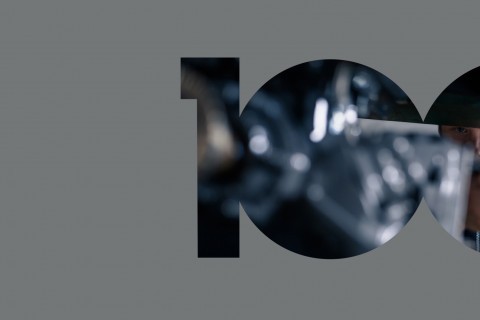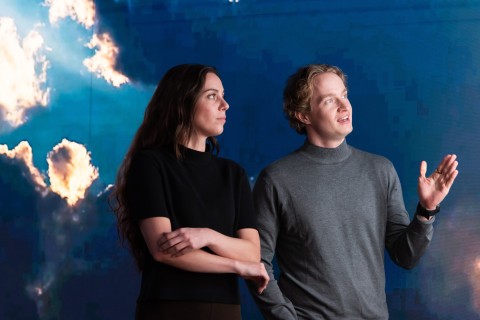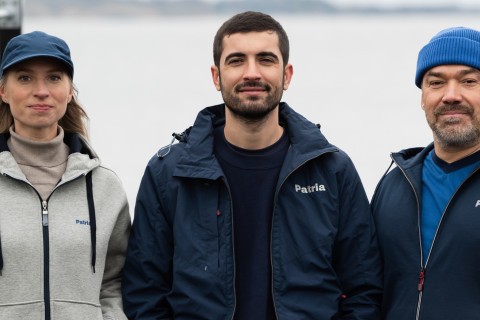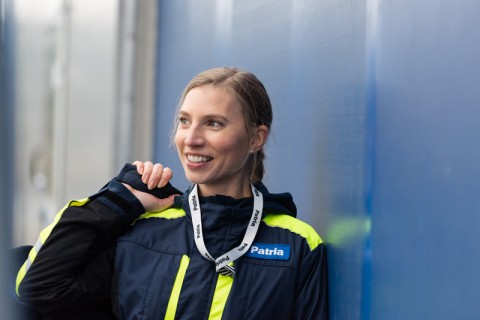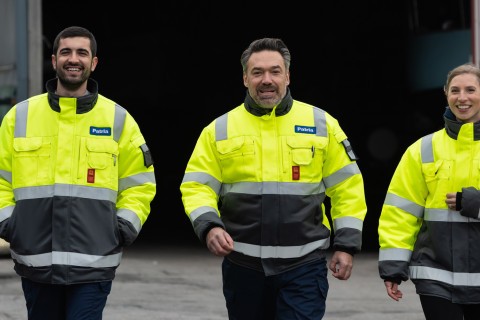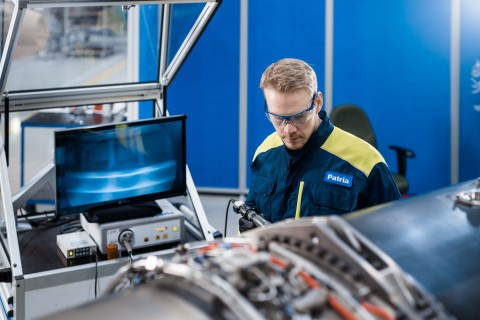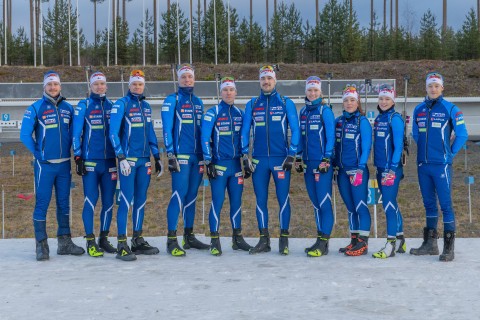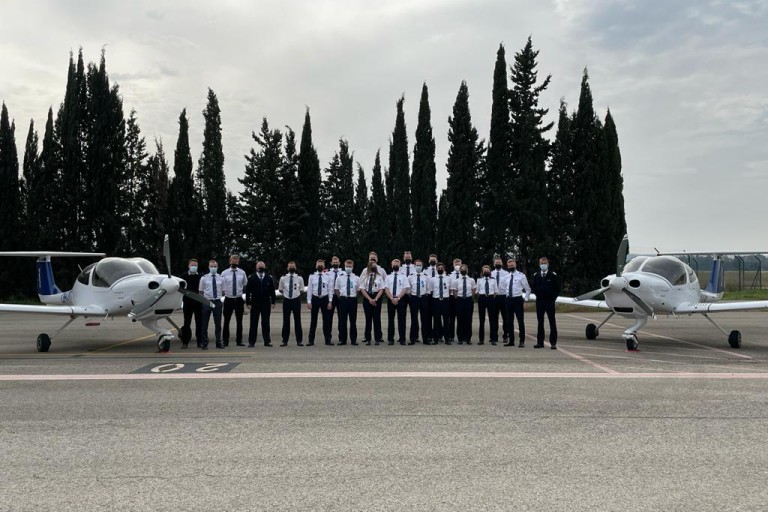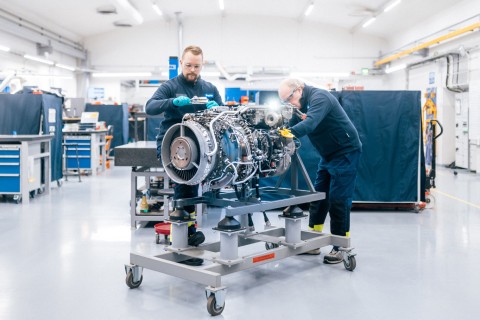
16.12.2014
Aviation safety has been under scrutiny in Kazakhstan in the recent years. One outcome is that the Civil Aviation Academy of Kazakhstan joined forces with Patria Pilot Training in training its students.
Text: Heini Santos
Photos: Matti Immonen
Diana Ibrayeva has discovered Finland from a perspective that is not very familiar to even most Finns. She is one of the twelve students from the Civil Aviation Academy of Kazakhstan that arrived in Finland last May to study at Patria Pilot Training to become an airline pilot. The training is a part of a four-year higher education degree that is required of pilots in Kazakhstan. Patria trains the students according to the European Aviation Safety Agency’s (EASA) requirements for commercial pilot licences (CPL) with multi-engine and instrument ratings .They will also receive full airline transport pilot license theory training and multi-crew cooperation training. ”The training has been even better than I expected. I knew that Patria is one of the best European flight schools. Safety is everything here, and the trainers are really professional. They take responsibility for the students and their learning, explain things thoroughly, and give valuable feedback after each flight,” Ibrayeva says.
Training builds safety
The cooperation between the Kazakhstan Academy of Civil Aviation and Patria is based on a memorandum that was signed during the Finnish president Sauli Niinistö’s visit to Kazakhstan in April 2013. The rector of the Kazakhstan Academy of Civil Aviation, Mukhtar Baizhumanov, says that Kazakhstan has been paying careful attention to improving aviation safety during the recent years. One of the most important elements that influence safety is high quality training of pilots. ”The education system in general is very good in Finland, and we want to learn from it in other fields as well. Kazakhstan’s Minister of Science and Education Bakytzhan Zhumagulov visited Finland in 2013, which is one indicator of how important this is to us. After carefully studying the education systems in a number of countries we came to the conclusion that Finland and Patria meet our goals and requirements the best,” Baizhumanov explains. Immediately after signing the memorandum, Patria and the Kazakhstan Academy of Civil Aviation together agreed on a practical model for cooperation. Patria representatives travelled to Kazakhstan to select the students, putting emphasis on the candidates’ English language skills and their personal capability for the profession. The chosen students did their first theory course in Kazakhstan, and in May 2014 they arrived in Finland for flight training. The first Kazakhstani group at Patria will finish their training at the end of 2015. In addition to future airline pilots, Patria trains flight instructors for Kazakhstan. The first instructor trainees arrived in Finland in the autumn of 2014. ”Both the teachers and students at the academy are very happy concerning the cooperation with Patria. We are happy for the students and we know that they are satisfied because they keep in close contact with their friends and teachers back in Kazakhstan. The goal is that all of them will receive the EASA pilot license,” Baizhumanov says.
Market for pilots
The EASA pilot license will set the young pilots up with a very positive career outlook. Kazakhstan is in the process of founding a new airline, and during 2015 fifteen new planes will be purchased for the airline’s use. Baizhumanov, who visited Finland in August, advises the Kazakh students in flight training to prepare themselves to become instructors – the new airline will be in need of pilots. Before that, however, the students will face two to three more years of higher degree studies in their home country. The memorandum includes two goals: the training of pilots and flight instructors in Finland, and setting up a Kazakh pilot training centre. In regards to the ladder, the Kazakhstan Academy of Civil Aviation has already purchased airplanes, simulators, and other technology required for flight training. They have also begun operations that lead towards training of flight instructors. ”When it comes to purchasing things and planning the syllabi, we ask for Patria Pilot Training’s consultation in everything. We have not really had to face any challenges. Issues that originate outside of our cooperation – such as differences in the two countries’ legislations – we have solved together through discussion. The outlook is great and we are certain that the partnership between Finland and Kazakhstan will grow and develop even further,” Baizhumanov assures.
Quick take-off
The Kazakh students are younger – between the ages of 18 and 20 – than the typical Finnish pilot trainees. Few of them have some experience under their belt from flying with ultralight planes in Kazakhstan. Under Patria’s supervision they began flying after spending only two weeks in Finland. ”Despite of their young age they have kept up with the pace and learned a lot in a short time. The goal is to improve their awareness of what goes on around them – enable them to operate in an independent and safe manner both on the ground and in the air. Our cultures differ in the sense that the Kazakh students expect distinct orders, and naturally that has to be considered in the style of teaching,” says flight instructor Sebastian Häggblom from Patria Pilot Training. Ibrayeva recalls the feelings during her first flight. "Theory and flying are two different worlds – in the air you have to focus on everything at the same time. The feeling during the first flight was amazing. I did not understand everything that was going on. The teacher said that I do not have to do anything but get used to the situation and look at the scenery but I wanted to try and understand right away," she describes. Like her fellow students, she now flies almost every day depending on the weather and what exercises need to be accomplished. In addition to theory lessons, she finds navigating and situational awareness in respect to other planes in the vicinity to be the most difficult aspects of flying. Student Constantine Zhmaka, speaks along the same lines. He says that he particularly enjoys the practical learning. He ended up in aviation because of a friend’s recommendation. He was going through his first year of studies at the civil aviation academy when he heard of the change to apply for flight training in Finland. ”I was really nervous when waiting for the results. My name was called last out of all the students who were selected. I felt relieved. My family is very proud of me – their 20-year-old son is part of the first Kazakh group flying in Finland on a stipend,” Zhmaka smiles. He is no longer nervous to hop on the plane alone. ”We work hard for each flight. Good preparation guarantees that there will not be problems during the flight. If you have prepared for the flight, you are ready.”
Headed towards growth
The Kazakhstan project is a significant step on Patria Pilot Training’s path to larger and more international operations. From the Patria perspective, the largest aspect of the cooperation is creating a joint training organization. "This type of consulting and helping our client create their own organization – in this case outside of the Finnish borders – is new for us. We are facing a remarkable and interesting project that will go on for years," states Managing Director Mikko Paronen from Patria Pilot Training. "A few years ago we made a conscious decision to expand internationally and have invested into the equipment, training and facilities accordingly. Before the Kazakhs we have had students from the St. Petersburg University of Civil Aviation, for instance." In the future, Paronen sees interesting opportunities for cooperation for example in Southeast Asia and the Middle East – areas where air traffic is increasing at a rapid pace. Patria Pilot Training organizes Multi-Crew Pilot License (MPL) training together with the Finnair Flight Academy, and negotiations in regards to that are in process with different airlines. This article was published in the Patria magazine in December 2014.
What did you like about the article?
Thank you for your opinion! You can share the article on social media using the buttons below:
